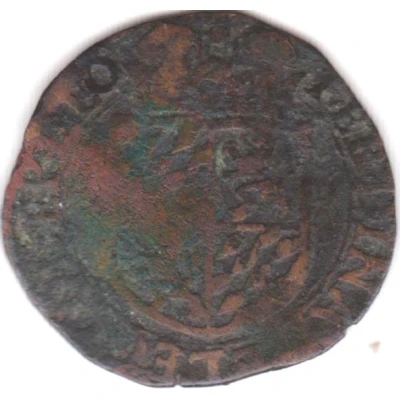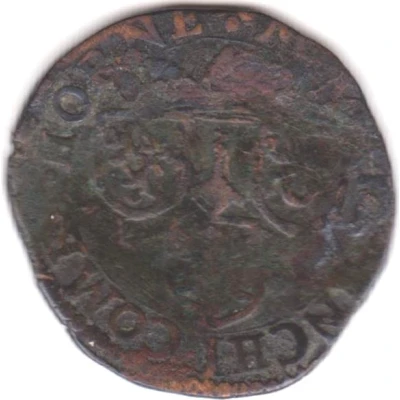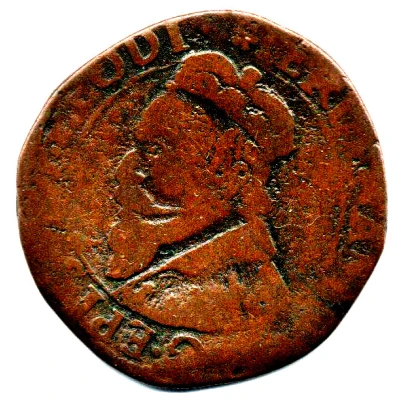


© JM
Liard - Ferdinand of Bavaria
1614 (1614-1615) years| Copper | 3.38 g | 25.5 mm |
| Issuer | Prince-bishopric of Liege (Belgian States) |
|---|---|
| Prince-bishop | Ferdinand of Bavaria (Ferdinand von Bayern) (1612-1650) |
| Type | Standard circulation coin |
| Year | 1614 (1614-1615) |
| Value | 1 Liard (1⁄80) |
| Currency | Florin Brabant-Liege (1545-1650) |
| Composition | Copper |
| Weight | 3.38 g |
| Diameter | 25.5 mm |
| Shape | Round (irregular) |
| Orientation | Variable alignment ↺ |
| Demonetized | Yes |
| Updated | 2024-10-04 |
| Numista | N#328772 |
|---|---|
| Rarity index | 94% |
Reverse
Arms of Franchimont, Hornes and the Holy Roman Empire arranged in a triangle, the perron of Liege in center, a crown on top flanked by two dots
Script: Latin
Lettering: ✤MAR•FRANCHI•COMES•DE•HORNE
Unabridged legend: MARchio FRANCHImontii COMes HORNE
Translation: Marquis of Franchimont, Count of Horne
Edge
Plain
Interesting fact
One interesting fact about the Standard circulation coin Liard - Ferdinand of Bavaria 1614 (1614-1615) from Prince-bishopric of Liege (Belgian States) made of Copper weighing 3.38 g is that it was minted during a time of great political and religious upheaval in Europe. The Prince-bishopric of Liege was a small state located in what is now modern-day Belgium, and it was a significant center of religious and political power during the early 17th century. The coin's minting was likely a response to the economic and political changes that were taking place in the region at the time, and it is a fascinating example of how currency can reflect the complexities of history.



